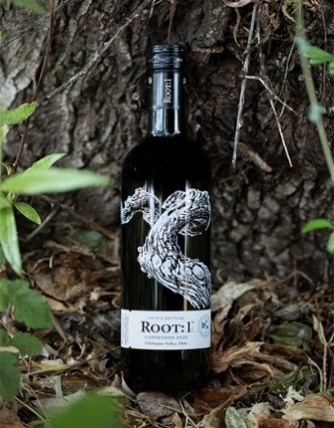The Colchagua Valley and Casablanca Valley in Chile are areas known for high-quality wines despite the challenges faced by winemakers. While the region’s climate and terroir make it ideal for viticulture, winemakers must navigate a variety of natural, economic, and environmental obstacles to maintain and improve wine quality.
Challenges of Producing Wine in the Casablanca Valley and Colchagua Valley, Chile
- Climatic Variability
Casablanca Valley: This cool-climate region benefits from oceanic influence, particularly breezes from the Pacific Ocean. While this creates ideal conditions for varieties like Sauvignon Blanc, Chardonnay, and Pinot Noir, it also poses challenges in terms of climate fluctuations. For example, late spring frosts and early autumn rainstorms can potentially damage vines or disrupt harvests. Additionally, the growing season can be unpredictable, leading to the challenge of managing a delicate balance between sugar ripeness and acidity levels in the fruit.
Colchagua Valley: Colchagua is a more inland and warmer region compared to Casablanca, known for producing robust reds like Cabernet Sauvignon, Carmenère, and Merlot. However, with warmer temperatures, there’s an increased risk of heat stress, which can lead to over-ripening, reduced acidity, and loss of delicate aromatics. Drought conditions are also a significant concern and require careful irrigation. - Water Availability
Both valleys face water scarcity, especially in recent years due to climate change. Colchagua Valley, which is further inland, is particularly vulnerable to drought. In these regions, vineyards often rely on irrigation systems, but water resources are finite, and maintaining sustainable irrigation practices while ensuring the quality of wine is a balancing act. In some areas, especially during dry seasons, water access can become limited, impacting grape yields and overall wine quality. - Soil Diversity and Management
Casablanca Valley: The soils in this valley can be challenging to manage due to their heterogeneity. Varying types of soils, ranging from alluvial to clay-based, require specific vineyard management techniques to ensure optimal grape growth. While these soils contribute to the unique character of wines, their complexity necessitates careful vineyard planning and management to avoid issues such as vine stress or imbalanced grape development.
Colchagua Valley: Colchagua alluvial soils are often fertile and rich, resulting in high yields. While this is beneficial for production, it can also lead to a dilution of flavor concentration in the grapes if not carefully managed. Some winemakers use techniques such as controlled irrigation and canopy management to optimize grape maturity and avoid overly large crops, ensuring that wines maintain their intense character and concentration. - Pest and Disease Management
Both valleys are subject to various pests and diseases, such as root-knot nematodes, powdery mildew, and botrytis (especially in the more humid Casablanca Valley). Managing these challenges requires vigilance with vineyard management strategies, including the use of organic and sustainable farming practices. There’s a growing emphasis on integrated pest management (IPM) to minimize the environmental impact while keeping crops healthy. - Global Climate Change
Climate change poses a growing threat to both the Casablanca and Colchagua Valleys, with shifts in temperature, rainfall patterns, and seasonal timing. For example, warmer temperatures can accelerate grape ripening, leading to issues like overly ripe fruit with lower acidity, which affects the freshness of wines. Winemakers are experimenting with different harvesting times and grapevine varieties that might be more resilient to the changing climate. Additionally, erratic weather patterns, including heavy rainfall or drought, can disrupt harvest schedules and affect grape quality. - Market Competition
As the global wine industry becomes increasingly competitive, Chile must contend with established wine regions, such as the Napa Valley, Bordeaux, and Tuscany. While Chilean wines have gained international recognition, winemakers in the Casablanca and Colchagua Valleys face the challenge of standing out in a crowded marketplace. To do so, producers often rely on the unique qualities of the terroir, such as the cool climate of Casablanca or the rich, fruity reds from Colchagua, to distinguish their wines. - Sustainability and Environmental Regulations
Both valleys are under increasing pressure to adopt sustainable farming practices due to environmental concerns and changing regulations. While many vineyards are already implementing sustainable or organic practices, achieving long-term environmental and economic sustainability remains a significant challenge, particularly in the face of increasing competition for resources like water, land, and energy.
Reality
Wine production in the Casablanca and Colchagua Valleys of Chile offers tremendous opportunities for producing world-class wines, but comes with its own set of challenges. Managing climate variability, water resources, soil types, pest control, and adaptation to climate change are critical factors that require skill, foresight, and adaptability from winemakers. Despite these challenges, both regions have continued to thrive, thanks to their distinctive terroirs and the dedication of their wine producers.
InMyPersonalOpinion.Life
Root: 1 Sauvignon Blanc 2022 – Casablanca Valley, Chile
Root: 1 Winery is a project of Viña San Pedro, a prominent Chilean wine producer established in 1865. The winery focuses on crafting premium wines from the Colchagua and Casablanca Valleys, emphasizing the unique qualities of the Chilean terroir. Renowned winemaker and soil expert Pedro Parra plays a key role in studying vineyard soil profiles to enhance grape quality and wine expression, contributing significantly to the advancement of Chilean wine production.
The winery’s name Root: 1 symbolizes a deep connection to the land and a commitment to producing wines with integrity, reflecting the unique characteristics of Chile’s soil and climate. The name also suggests the winery’s focus on the “roots” of winemaking, emphasizing tradition, sustainability, and respect for the natural environment.
Notes
Root: 1 Sauvignon Blanc 2022 was sourced from the renowned Casablanca Valley, located along Chile’s cool coastal region. The Sauvignon Blanc is a bright, pale straw-yellow color with greenish reflections, showcasing its youthful vibrancy. It is crystal-clear with no sediment, indicating careful filtration and handling. crisp expression of this classic varietal.
It offers an inviting nose of citrus fruits such as lime, lemon zest, and grapefruit, along with subtle herbal notes like fresh grass and a touch of green bell pepper. On the palate, the wine is fresh and lively, with a clean, refreshing acidity that balances its fruit-forward character. Flavors of green apple, melon, and a hint of tropical fruit emerge, creating a well-rounded profile. The finish is crisp and lingering, with a zesty minerality that gives the wine a sense of place, reflecting the cool climate and distinctive terroir of the Casablanca Valley.
On the palate, the wine is crisp and refreshing, with a bright acidity that provides structure and lift. The citrus and tropical fruit flavors follow through, with additional notes of green apple and a whisper of gooseberry. The wine has a medium-light body, making it approachable and easy-drinking.
The mouthfeel is smooth with a slight zing from the high acidity, giving the wine a lively and invigorating texture. The balance between acidity and fruit concentration is well-achieved, ensuring neither dominates.
The finish is clean and lingering, with citrus zest and a subtle minerality persisting. There is a pleasant, slightly saline quality that invites another sip, making it an excellent companion for food or enjoyed on its own.
2. Root: 1 Wines – Cabernet Sauvignon, Colchagua Valley, Chile
The Root: 1 Cabernet Sauvignon is produced in the Colchagua Valley in Chile. This brand takes pride in its sustainability and the use of un-grafted vines (pure-rooted vines which are rare and believed to produce purer expressions of the grape).
Notes
The eye-appeal: deep ruby red with garnet reflections. Aromas of ripe blackcurrant, plum, and cherry, with subtle hints of tobacco, cedar, and sweet spices from oak aging delight the nose. On the palate it is full-bodied with robust tannins and flavors of blackberry, dark chocolate and presents a long finish that is smooth and lingering leaving impressions of dark fruit with a touch of oak.
3. Root: 1 Carmenère. 85% Carmenere, 15% Syrah. Soil: Alluvial and loamy

Notes
The Carmeniere presents Intense deep red with violet hues delivering pronounced notes of ripe blackberries, figs, and plums, alongside classic Carmenère characteristics of green pepper and smoky undertones. Medium to full-bodied on the palate along with a velvety texture. Flavors of dark fruit are complemented by herbal and earthy nuances. The finish is smooth and satisfying, with soft tannins and a touch of spice.





![[part-3] 2025 Surgeon General’s Advisory: Paving the Way for Healthier Wine and Spirits Choices](https://inmypersonalopinion.life/wp-content/uploads/2025/02/wine-cancer-3.jpg)